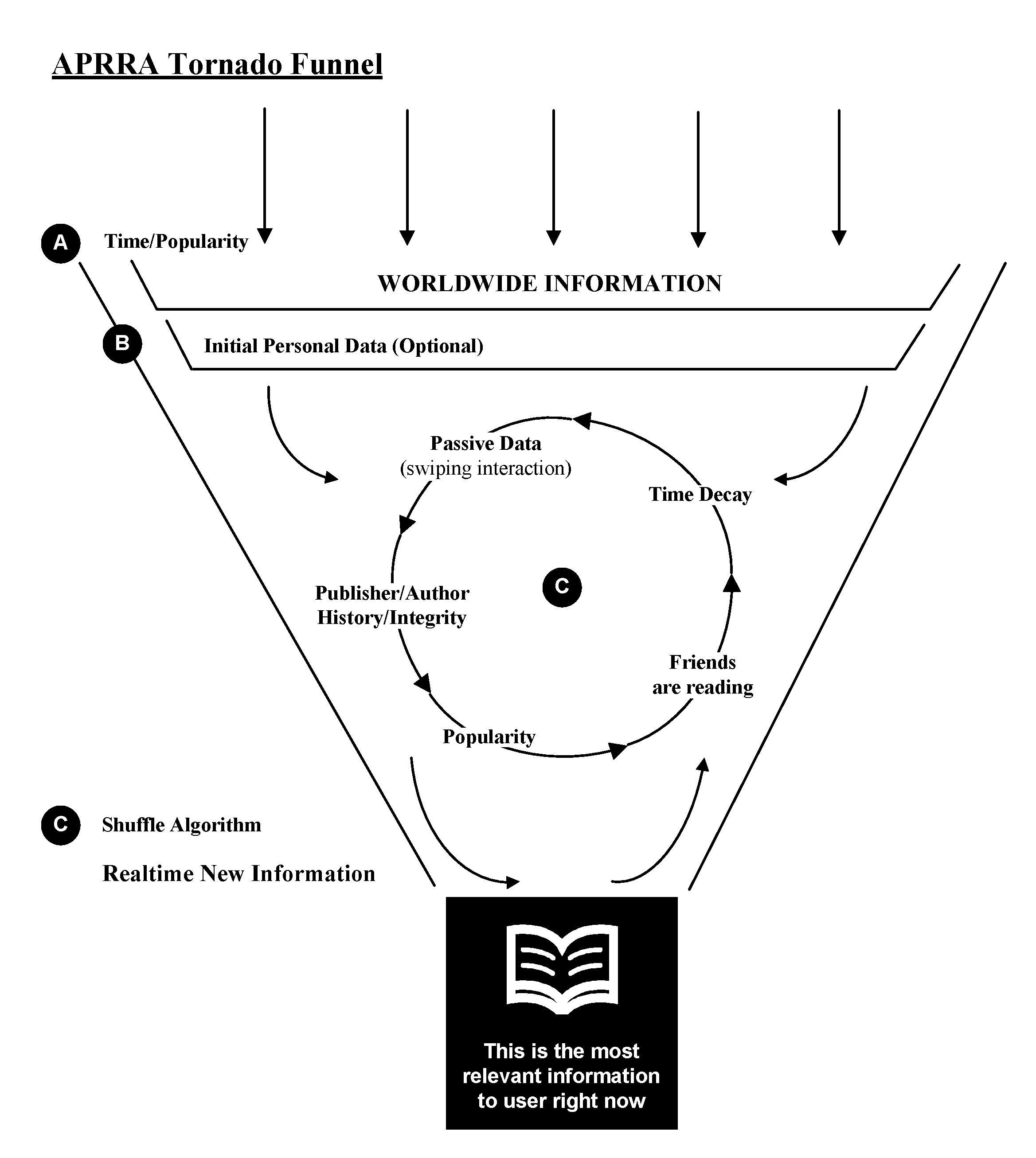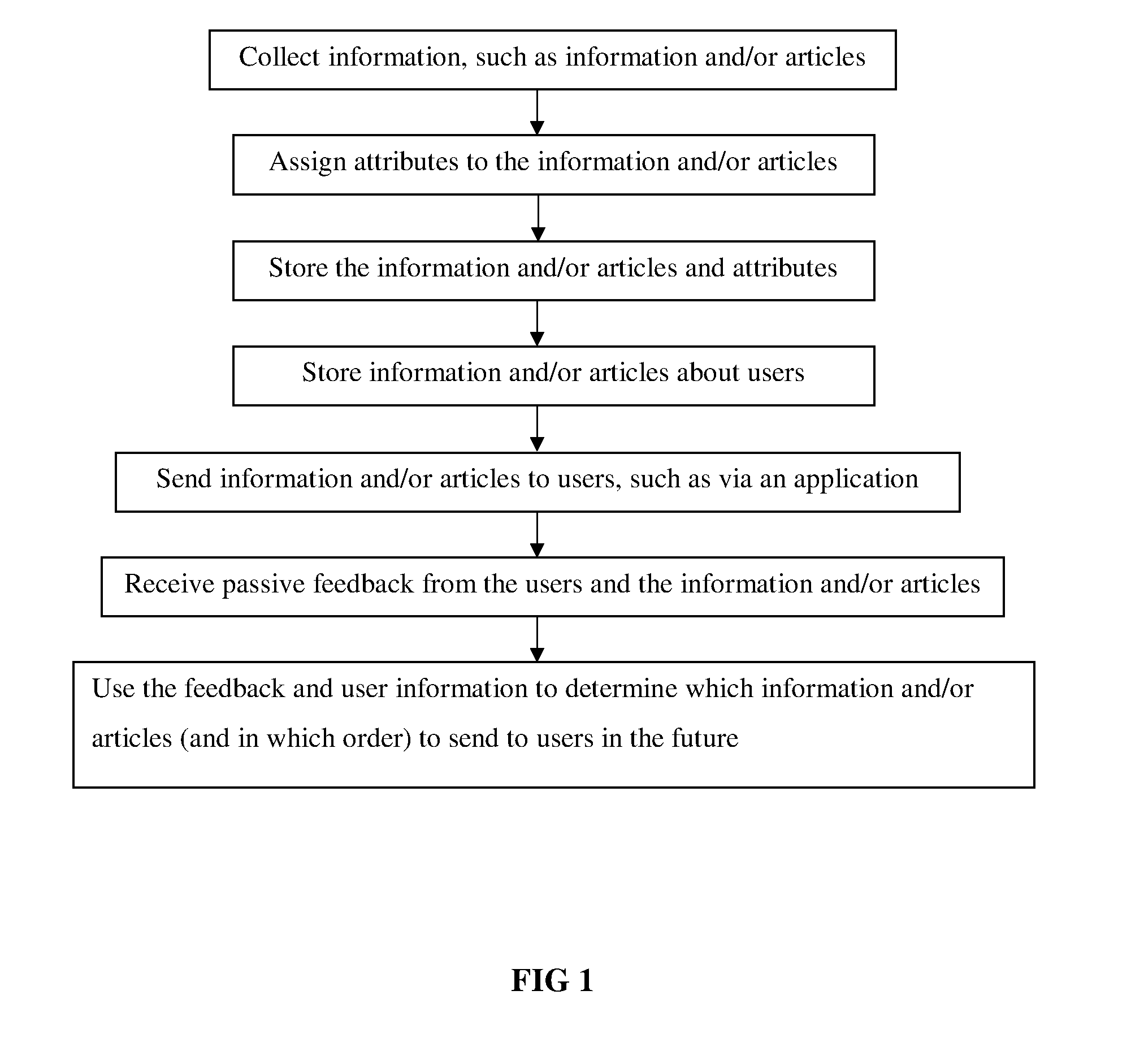Sorting information by relevance to individuals with passive data collection and real-time injection
- Summary
- Abstract
- Description
- Claims
- Application Information
AI Technical Summary
Benefits of technology
Problems solved by technology
Method used
Image
Examples
example 1
Graphic User Interface
[0099]FIG. 7A and FIG. 7B illustrates an example of the graphic user in an embodiment. Referring to FIG. 7(a), component 701 comprised a function of search. The user could use this to search publishers, people, or any particularities. Component 702 was the place to display sorted information; in this example, the system was performing sorting, so an image of “shuffling” was displayed. Components 703 and 704 were buttons for the user to provide feedback, where 703 indicated a dislike and 704 indicated a like. Components 705, 706, 707, and 708 were particular categories (interests, popular, nearby, and following, respectively) to narrow the search.
[0100]Component 709 allowed a display of the user's picture. Component 710 recorded the amount of liked information the user had indicated. Component 711 was a button where the user could click to share the current information with friends via social media (Facebook, Twitter, email).
[0101]During the shuffling, the syste...
example 2
Information Video
[0103]FIG. 8A and FIG. 8B illustrates an example of an embodiment where the user liked an information video. The system analyzed the profile information of the user and identified information which was of the user's interest with high probability. In this example, an interview video with Forbes CMO was presented to the user, shown as 803 in FIG. 8A. When the user would like to move on to the next information message, the system required the user to provide a binary indication which either liked or disliked the information. The user could click the “check” or “cross” button in order to express “like” or “dislike,” respectively. Alternatively, the user could swipe the information to the right or to the left, in order to express “like” or “dislike,” respectively. In FIG. 8B, the user swiped the information 804 to the right, corresponding to an indication of liking the information. Referring FIG. 8B, when the user was wiping the information video, the next information m...
example 3
Information Article
[0105]FIG. 9A and FIG. 9B illustrates an example of an embodiment where the user disliked an information article. The system analyzed the profile information and the past like / dislike history of the user to sort an information message of interest. In this example, an article “Happy 350th Birthday, New York!” published by USA Today with was presented to the user, shown in FIG. 9A. When the user would like to move on to the next information message, the system required the user to provide a binary indication which either liked or disliked the information. In this example shown in FIG. 9B, the user wiped the information to the left, an indication of disliking the information article. Furthermore, referring FIG. 9B, when the user was wiping the information article, the system was searching the best information match with the user's interests.
PUM
 Login to View More
Login to View More Abstract
Description
Claims
Application Information
 Login to View More
Login to View More - Generate Ideas
- Intellectual Property
- Life Sciences
- Materials
- Tech Scout
- Unparalleled Data Quality
- Higher Quality Content
- 60% Fewer Hallucinations
Browse by: Latest US Patents, China's latest patents, Technical Efficacy Thesaurus, Application Domain, Technology Topic, Popular Technical Reports.
© 2025 PatSnap. All rights reserved.Legal|Privacy policy|Modern Slavery Act Transparency Statement|Sitemap|About US| Contact US: help@patsnap.com



